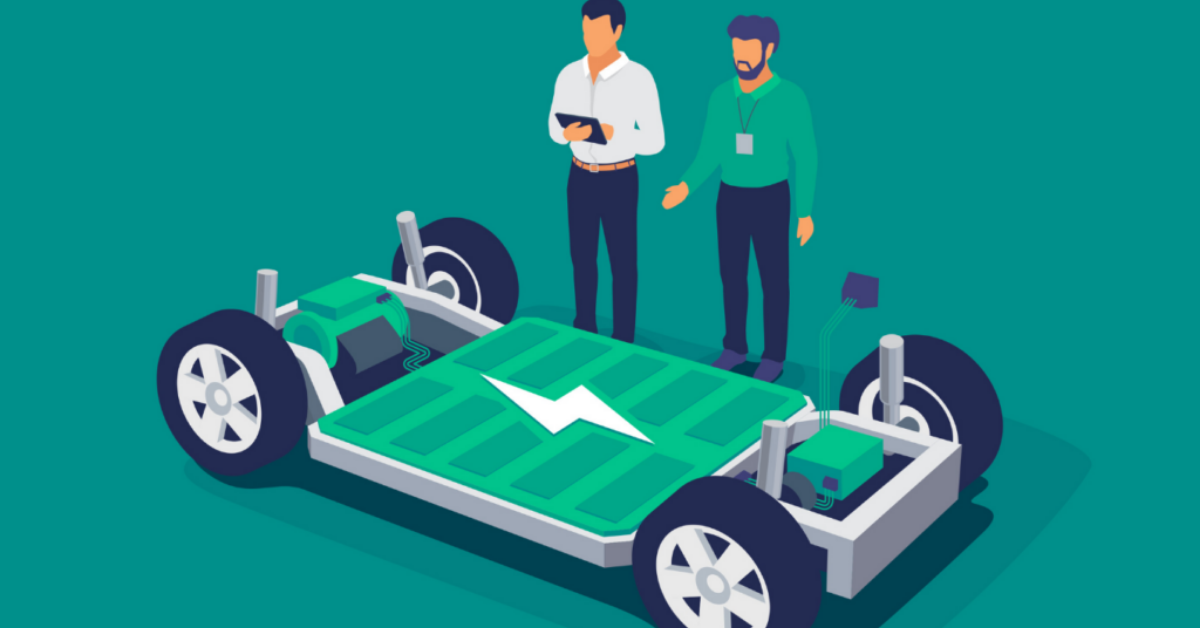The EV market in India could represent an INR 5,000 Cr opportunity by 2025
Battery swapping and interoperability can play a vital role as they help build the supply chain network to boost EV adoption, which in turn will lead to a faster transition
It is vital to establish sustainable business models that can be leveraged to shift this upfront cost to the cost of operating an EV
Electric vehicles are becoming more prominent in today’s time, especially with the increasing use case in commercial vehicle space. In fact, according to Avendus Capital, the EVs in India could represent an INR 5,000 Cr opportunity by 2025. Many industry manufacturers and solution providers are working on the measures to make electric vehicles more affordable, easy to charge and economical to operate. One such technology that gives all these benefits to fleet operators is battery swapping.
Battery swapping technology helps the user replace the depleted EV battery with a fully charged one. A swapping station at any particular location generally comprises multiple batteries getting charged simultaneously. All it takes is for an EV user to locate a swapping station, replace the depleting battery with a charged one, put the empty battery on charge and go to work.
Battery swapping technology has opened up quite a few opportunities for fleet owners who have range anxiety. Range anxiety refers to the fear an EV driver feels when the battery charge is low and the usual sources of electricity are unavailable.
Apart from reducing the driver’s range anxiety, battery leasing can help EV consumers to save on the cost of purchasing a battery. It consumes minimum time and requires minimum infrastructure to charge at a battery station which could otherwise end up taking hours.
A Positive Step But More Needs To Be Done
With more than 12 Mn tonnes of lithium-ion batteries set to retire by 2030, the reliance on raw materials such as lithium, nickel and cobalt will only increase. At the end of their lives, batteries also create a lot of electronic waste. This will have a massive environmental effect.
Many industry players are working on how to discard dead batteries and extract valuable metals at scale to keep materials in circulation and reduce reliance on mining. Though in my opinion, the industry should focus on a better solution to keep the battery in use for longer in alternative sectors.
Battery cost currently constitutes about 40-70% of the upfront cost for an electric vehicle. If these batteries are decoupled and sold separately, it can help shift the upfront cost to the energy operator’s network. This would essentially translate to shifting the cost of ownership to operations. Battery swapping and interoperability can play a vital role in this as they help build the supply chain network to boost EV adoption, which in turn will lead to a faster transition.
Aggressive Roadmap To Adopt Swapping
Modern mobility solutions have two agendas — technology transition and mobility as a function. To change consumer behaviours and fundamentally change the ecosystem, we need to focus on an aggressive target with a proper roadmap for battery swapping.
- Use Standard Battery Technology: Standardisation of the batter design is the answer to making battery switching easier. Whether it is a standard pack size, cavity, electric power control unit, or output performance per unit, these innovations serve as catalysts for achieving economies of scale more quickly.
- Recycling Of EV Batteries: Battery recycling offers a huge opportunity for the Indian market. When EV batteries are built with a recycle-friendly design kept in mind, it will encourage the practice of repurposing. Additionally, if the manufacturers are encouraged to use recycled materials to make the batteries, it will eliminate sourcing. This will ultimately lead to reduced vehicular unit costs.
- Battery-As-A-Service (BaaS): Battery needs to be treated as a service segment such as LPG or other functional batteries. It is necessary to extend the incentives to battery-unit to subsidise per-kilometre operations rather than the purchase cost. The gross-cost financing models, along with the standard operating procedure for energy operators can help explore financially viable solutions.
- Subscription Model Of Battery Swapping: BaaS can be available to users at a subscription model to gain the trust of the users and to boost confidence in availability.
- Building Co-Reliance: It is important to identify the value-chain propositions for users, drivers, energy operators, urban local bodies and financing institutions in the swapping of EV batteries. Additionally, startups and big EV manufacturers should also focus on the inventory of previous existing modes, the infrastructure of land, space for parking, and spaces for charging infrastructure, among others.
- Deploy Intelligent Transport Systems Technology: The usage and promotion of database based digital applications would aid in the human-to-machine and machine-to-machine interface. This would help increase EV and battery swapping station usage and traction. All the while ensuring efficient operations, safety detection, seamless delivery, and improved convenience in the EV ecosystem.
Challenges And The Way Through
In the past few years, the global EV space has seen increased traction. This is despite the fact that the upfront costs of an EV are much higher than its Internal Combustion Engine (ICE) counterpart, with the battery pack making up at least half the cost.
To combat this, many manufacturers are offering batteries separately from a vehicle. In this case, a fleet owner can buy vehicles without batteries and utilise battery swapping to power their vehicles, reducing the initial cost.
Another major hindrance to purchasing an EV remains the range anxiety that the consumer suffers. Compared to petrol or diesel stations, EV charging facilities are hard to come by, which raises the range anxiety even more, especially when travelling long distances. The most efficient charger will replenish at most 80% of the battery in almost an hour. That’s quite a considerable time taking into account that fuel pumps can fill up a tank in 5 minutes. In the case of a swapping station, one can simply locate a station and go and replace the empty battery with a new one.
In a bid to promote this practice, the government announced a battery swapping policy earlier this year. The policy mainly targets the battery swap services for three-wheeled auto-rickshaws and two-wheelers. Under the policy, EV consumers will get incentives of up to 20% on the subscription or lease cost of the battery.
With the battery swapping technology still not being commonplace in the Indian market, there is a prevalence of charging stations. Though, the way ahead has to be focused on the creation of a robust swappable battery network. This network will mirror the existing network of fuelling stations to facilitate seamless operations.
Private sector investment can be leveraged for operations of the supply chain networks and sustenance of energy operators. In this way, the battery swapping and network of energy operators become a service segment. The availability and connectivity of this energy infrastructure are critical to the operation of these exchanging stations. So, it is vital to establish sustainable business models that can be leveraged to shift this upfront cost to the cost of operating an EV.










